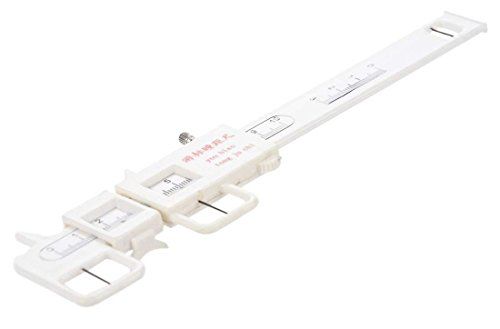
Understanding and Gauging Interpupillary Distance: Key Insights for Optimizing Virtual Reality Experiences

Understanding and Gauging Interpupillary Distance: Key Insights for Optimizing Virtual Reality Experiences
Quick Links
- What Is IPD, and Why Does It Matter for VR?
- Ask Your Optometrist
- Use a Mirror and Ruler
- Use an App
- Use Text Sharpness as a Guide
- Listen to Your Body
Your IPD (Interpupillary Distance) is a measurement of the distance between your pupils when looking straight ahead. Virtual reality headsets need this information to present the best experience, but you’ll need to measure your IPD first before adjusting the setting.
What Is IPD, and Why Does It Matter for VR?
There are two main reasons that IPD matters in VR. Most VR headsets offer some way to adjust the lenses of the headset to suit different IPD. The lenses can either be moved closer together or further apart, or a software adjustment can be made to simulate a shifting focal point.
The first reason IPD matters is that it’s best for the optimal focal point of the lens to align directly with your pupils. This ensures that you get the sharpest image possible for that headset. The second reason has to do with stereoscopic vision.
We perceive depth in two main ways. Monocular cues are those elements of a scene that clue your brain in on size and distance using only one eye. Movies like The Lord of the Rings use a technique called forced perspective to take advantage of monocular cues and trick us into believing something is smaller or bigger than it actually is.
Stereoscopic cues require both eyes and rely on the slight difference in the image each eye perceives. 3D media, whether at a cinema or in VR, generate two slightly different images to replicate the effect of depth perception.
Every person’s IPD is different, so your brain is tuned to do the 3D calculation for your particular IPD. If the VR headset is using the wrong IPD when calculating what to show to each eye, your depth perception will be incorrect. This can even lead to eye strain as your eyes try to compensate for this odd situation.
Another good reason to know your IPD is that it may fall outside of the IPD range for certain headsets. So you can avoid buying VR headsets that will never work right for you. The Oculus Quest 2 has an IPD range of 58mm to 68mm. These are split into three lens positions, that are quick to change between. If you fall outside of this range, it may not be possible to get a perfectly clear image.
This is why measuring your IPD is important in VR, but now we have to actually do the work of measuring it.

Oculus Quest 2
$298 $350 Save $52
Our favorite all-around VR headset is perfect for almost everyone who wants to get into VR, whether you want to use it on its own or connect it to a PC.
$298 at Amazon See at Bestbuy See at Target
Ask Your Optometrist

If you’ve ever gone for an eye exam, your optometrist probably has your IPD on record. If they don’t, they’ll be happy to measure it for you during a standard eye test or quickly check it for you, for a small fee of course. This is the most accurate way to get your IPD number.
Use a Mirror and Ruler
If you have a mirror and a ruler marked in millimeters, you can get a reasonably accurate IPD measurement at home.
To do so, stand directly in front of the mirror and look straight ahead into your own eyes.
Position the 0mm mark under one eye, lined up with the center of the pupil.
Note the measurement under the other eye.
You may have to close each eye, in turn, to see the measurements clearly. Make sure the ruler remains straight. This isn’t the most accurate way to measure IPD because a regular ruler can’t get close enough to your face with your nose in the way. Flipping the ruler upside down and holding it against your brow could give you better results. You can also ask a friend to do the measurement.
If you’re willing to spend a little cash, you can buy a special IPD ruler , which will be completely accurate. Of course, you only need it once for yourself, but it’s also handy when showing someone else VR and getting a quick IPD reading to make sure they have the best experience.

FULYEE Optical Vernier
A cheap and easy way to measure your IPD for VR.
Use an App
There are mobile apps that can help you measure IPD as well. If you own one an iPhone or iPad with a depth-sensing camera, you can use the EyeMeasure app to get an IPD reading.
Android users have apps to choose from as well. GlassesOn lets you measure your IPD using its phone app and a typical magnetic card.
Use Text Sharpness as a Guide
If you have a VR headset that allows you to adjust its IPD on the fly with a physical button, you can get a rough IPD value by trying different IPD settings and observing the results. Since a properly calibrated IPD setting should also provide the best clarity, you can close one eye and then look at the text in VR while adjusting your IPD.
The setting where text appears sharpest and clear is most likely where your IPD should be. Headsets with physical IPD controls the current setting should be displayed in the headset, so if you find a setting that works for you, that number can be used on other headsets as well.
Listen to Your Body
Even if you get a precise IPD measurement and set your headset accordingly, it might still not be the best setting to work for you as an individual. You may still have clarity or eye strain issues. If there’s an IPD setting that works better for you, use it. The actual measurement is the right starting point, but don’t be afraid to fine-tune things for your own sense of comfort.
Also read:
- [New] 2024 Approved VidVault Prodigies Mastering the Download of Tweeted Videos
- [New] Techniques to Effortlessly Record Your Instagram Experiences
- [New] The Art of Pinpointing Perfect Pexels Photographs
- [New] The Essential Mix Combining Intro & Exit Strategies for Success
- [Updated] Splendid Review & Different Selections
- [Updated] The Balancing Act Managing Your Off-Facebook Activity Displays for 2024
- [Updated] The Complete Blueprint for Capturing Your PS4 Adventures
- [Updated] Top 10 Android and iOS Timers for Effortless Wedding Countdown Management
- [Updated] Unexplained Angle Flip Sideways Vids in Instagram World
- 2024 Approved Streaming Showdown The Podcast Challenge to YouTube’s Dominance
- 2024 Approved The Photographer's Toolkit Top Text Editors for Images
- A Comprehensive Review of Verizon's Current 5G Offering
- Best Practices for Streaming Athletic Games Real-Time
- Does Airplane Mode Turn off GPS Location On Samsung Galaxy S23 Tactical Edition? | Dr.fone
- In 2024, The Future of Wagering Vegas Pro's Evolution in '21
- The Complete Manual for Creating Condensed YouTube Videos
- Thrill Seekers Challenge Hero5B Vs Hero5 Session in Action for 2024
- Title: Understanding and Gauging Interpupillary Distance: Key Insights for Optimizing Virtual Reality Experiences
- Author: Daniel
- Created at : 2025-02-28 18:03:06
- Updated at : 2025-03-05 22:37:20
- Link: https://some-skills.techidaily.com/understanding-and-gauging-interpupillary-distance-key-insights-for-optimizing-virtual-reality-experiences/
- License: This work is licensed under CC BY-NC-SA 4.0.